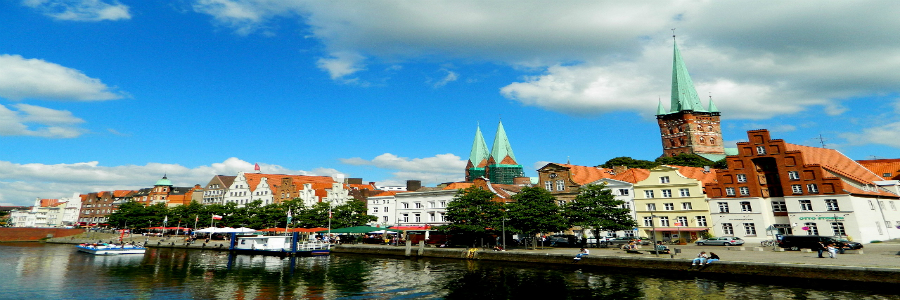In 1241 Hamburg and the smaller town of Lübeck, east of the city and heading towards the North Sea coast, signed a mutual agreement that protected their ships and trading routes.
This affirmed existing moves by sea ports and trading cities along the eastern peripheries of Germany to protect their merchants’ rights, and became legally known as the Hanseatic League.
The powerful trading union went on to dominate not just trade but politics across much of Europe in the Middle Ages.


Lovely Lübeck still celebrates its ‘Hanse City’ title and retains its island base around which high walls protect its climbing cobbled lanes and medieval street patterns.
More than 1000 historical buildings have survived 900 years of the rush to modernity, as well as two world wars in which the German coastline suffered heavy aerial attacks by Allied bombers looking to destroy key ports and provisioning stations.
A moving reminder of the town’s dark times are housed where they fell in 1942 within the 13th century Marienkirche – its shattered bells – from the 125 foot twin spires of Germany’s third largest church. We had a peek inside.
Nearby the Rathaus, intact from the 1200s, was a glorious vision in carved stone with later additions from the 1400 -1500s. It seemed variously gothic with gargoyles and celebratory in white sculptured and gold gilt reliefs.
Unfortunately alongside were cheap shopping arcades reminiscent of 1970s Britain boasting glass tiled inner stairwells and cheap plasterboard frontages.
It was of course another reminder of the damage done to the town, and the gaps that were subsequently filled, following the hell that rained from the skies in the Second World War.
Writers Thomas Mann (The Buddenbrooks, Death in Venice, The Magic Mountain) and Gunter Grass-Haus (The Tin Drum) both lived and worked in the city from where they collected their Nobel Prizes for Literature, 70 years apart between 1929 and 1999.
Not every resident was a well-heeled luminary. From the Middle Ages Lübeck became a boom town for artisans and craftspeople. Being poor and not having anywhere to live their presence created a noisy demand for housing. Altruistic merchants and physicians built a series of small, single-storey homes set in courtyards behind the main streets and accessed through narrow alleyways.
Needless to say these ‘gangs’ are now highly desirable and bijou little town pads that command the highest prices in estate agents windows.

We meandered down to the waterfront to admire one of Germany’s icons, the Lübeck Holstentor, a huge saggy-looking medieval city gate boasting still intact cylindrical towers. Coach loads of Scandinavian tourists were pouring onto the wooden flotillas to catch river boat rides around the island town.
We headed back up and inland to the ancient ‘zollhaus’ or toll house and admired the darkly painted tiny rooms of long tables and benches favoured by the town’s patricians in the 1500s and now enjoyed by locals drinking the region’s light gold Jever pilsner beer.
Marzipan is also a favourite in Lübeck. Huge perturbing sculptures of light houses, ship’s captains and the odd jellyfish were common sights.
We particularly liked the small detailed crustaceans that lined the shelves of the famous Niederegger store, alongside more classical rows of small fruits.

Lübeck calls itself the ‘Queen of the Hanse’ and indeed it feels regal, proud and robust. Swallows and swifts chattered in the air above as we wandered in the late afternoon sunshine along the riverbanks admiring the clear water that glittered in the bright afternoon sunlight. A delight!







